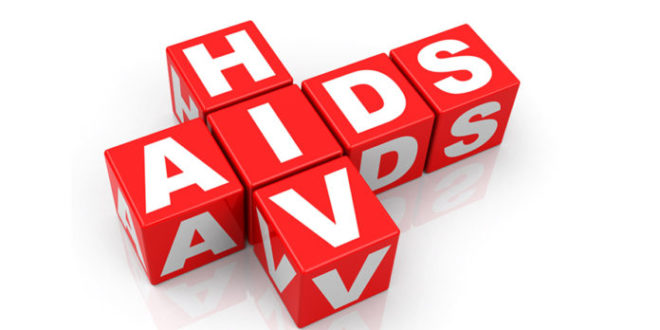More than 1.2 million people in the United States are living with HIV. It’s different for everybody, but with treatment, many can expect to live a long, productive life.
The most important thing is to start antiretroviral treatment as soon as possible. By taking medications exactly as prescribed, people living with HIV can keep their viral load low and their immune system strong.
It’s also important to follow up with a healthcare provider regularly.
Other ways people living with HIV can improve their health include:
- Make their health their top priority. Steps to help people living with HIV feel their best include:
- fueling their body with a well-balanced diet
- exercising regularly
- getting plenty of rest
- avoiding tobacco and other drugs
- reporting any new symptoms to their healthcare provider right away
- Focus on their mental health. They could consider seeing a licensed therapist who is experienced in treating people with HIV.
- Use safer sex practices. Talk to their sexual partner(s). Get tested for other STIs. And use condoms and other barrier methods every time they have vaginal or anal sex.
- Talk to their healthcare provider about PrEP and PEP. When used consistently by a person without HIV, pre-exposure prophylaxis (PrEP) and post-exposure prophylaxis (PEP) can lower the chances of transmission. PrEP is most often recommended for people without HIV in relationships with people with HIV, but it can be used in other situations as well. Online sources for finding a PrEP provider include PrEP Locator and PleasePrEPMe.
- Surround themselves with loved ones. When first telling people about their diagnosis, they can start slow by telling someone who can maintain their confidence. They may want to choose someone who won’t judge them and who will support them in caring for their health.
- Get support. They can join an HIV support group, either in person or online, so they can meet with others who face the same concerns they have. Their healthcare provider can also steer them toward a variety of resources in their area.
There are many ways to get the most out of life when living with HIV.
In the 1990s, a 20-year-old person with HIV had a 19-year life expectancyTrusted Source. By 2011, a 20-year-old person with HIV could expect to live another 53 years.
It’s a dramatic improvement, due in large part to antiretroviral therapy. With proper treatment, many people with HIV can expect a normal or near- normal lifespan.
Of course, many things affect life expectancy for a person with HIV. Among them are:
- CD4 cell count
- viral load
- serious HIV-related illnesses, including hepatitis
- misusing drugs
- smoking
- access, adherence, and response to treatment
- other health conditions
- age
Where a person lives also matters. People in the United States and other developed countries may be more likely to have access to antiretroviral therapy.
Consistent use of these drugs helps prevent HIV from progressing to AIDS. When HIV advances to AIDS, life expectancy without treatment is about 3 yearsTrusted Source.
In 2017, about 20.9 million peopleTrusted Source living with HIV were using antiretroviral therapy.
Life expectancy statistics are just general guidelines. People living with HIV should talk to their healthcare provider to learn more about what they can expect.
Currently, there are no vaccines to prevent or treat HIV. Research and testing on experimental vaccines are ongoing, but none are close to being approved for general use.
HIV is a complicated virus. It mutates (changes) rapidly and is often able to fend off immune system responses. Only a small number of people who have HIV develop broadly neutralizing antibodies, the kind of antibodies that can respond to a range of HIV strains.
The first HIV vaccine efficacy study in 7 years was underway in South Africa in 2016. The experimental vaccine is an updated version of one used in a 2009 trial that took place in Thailand.
A 3.5-year follow-up after vaccination showed the vaccine was 31.2 percent effective in preventing HIV transmission.
The study involves 5,400 men and women from South Africa. In 2016 in South Africa, about 270,000 peopleTrusted Source contracted HIV. The results of the study are expected in 2021.
Other late-stage, multinational vaccine clinical trials are also currently underway.
Other research into an HIV vaccine is also ongoing.
While there’s still no vaccine to prevent HIV, people with HIV can benefit from other vaccines to prevent HIV-related illnesses. Here are the CDC recommendations:
- pneumonia: recommendedTrusted Source for all children younger than 2 and all adults 65 and older
- influenza: recommendedTrusted Source for all people over 6 months old annually with rare exceptions
- hepatitis A and B: ask your doctor if you should get vaccinated for hepatitis A and B, especially if you are in a higher risk groupTrusted Source
- meningitis: the meningococcal conjugate vaccination is recommendedTrusted Source for all preteens and teens at 11 to 12 years old with a booster dose at 16, or anyone at risk. The serogroup B meningococcal vaccination is recommended for anyone 10 years or older with increased risk.
- shingles: recommendedTrusted Source for those ages 50 or older
Here are today’s HIV numbers:
- In 2019, about 38 million people worldwide were living with HIV. Of those, 1.8 million were children below the age 15 years.
- At the end of 2019, 25.4 million people living with HIV were using antiretroviral therapy.
- Since the pandemic began, 75.7 million people have contracted HIV, and AIDS-related complications have claimed 32.7 million lives.
- In 2019, 690,000 people died from AIDS-related diseases. This is a decline from 1.9 million in 2005.
- Eastern and Southern Africa are the hardest hit. In 2019, 20.7 million people in these areas were living with HIV, and 730,000 more contracted the virus. The region has more than half of all people living with HIV worldwide.
- Adult and adolescent women accounted for 19 percent of new HIV diagnoses in the United States in 2018. Almost half of all new cases occur in African Americans.
- Left untreated, a woman with HIV has a 15–45 percentTrusted Source chance of passing HIV to her baby during pregnancy or breastfeeding. With antiretroviral therapy throughout pregnancy and avoidance of breastfeeding, the risk is less than 5 percentTrusted Source.
- In the 1990s, a 20-year-old person with HIV had a life expectancyTrusted Source of 19 years. By 2011, it had improved to 53 years. Today, life expectancy is near normalTrusted Source if antiretroviral therapy is started soon after contracting HIV.
As access to antiretroviral therapy continues to improve around the world, these statistics will hopefully keep changing.
 Home Of Ghana News Ghana News, Entertainment And More
Home Of Ghana News Ghana News, Entertainment And More





